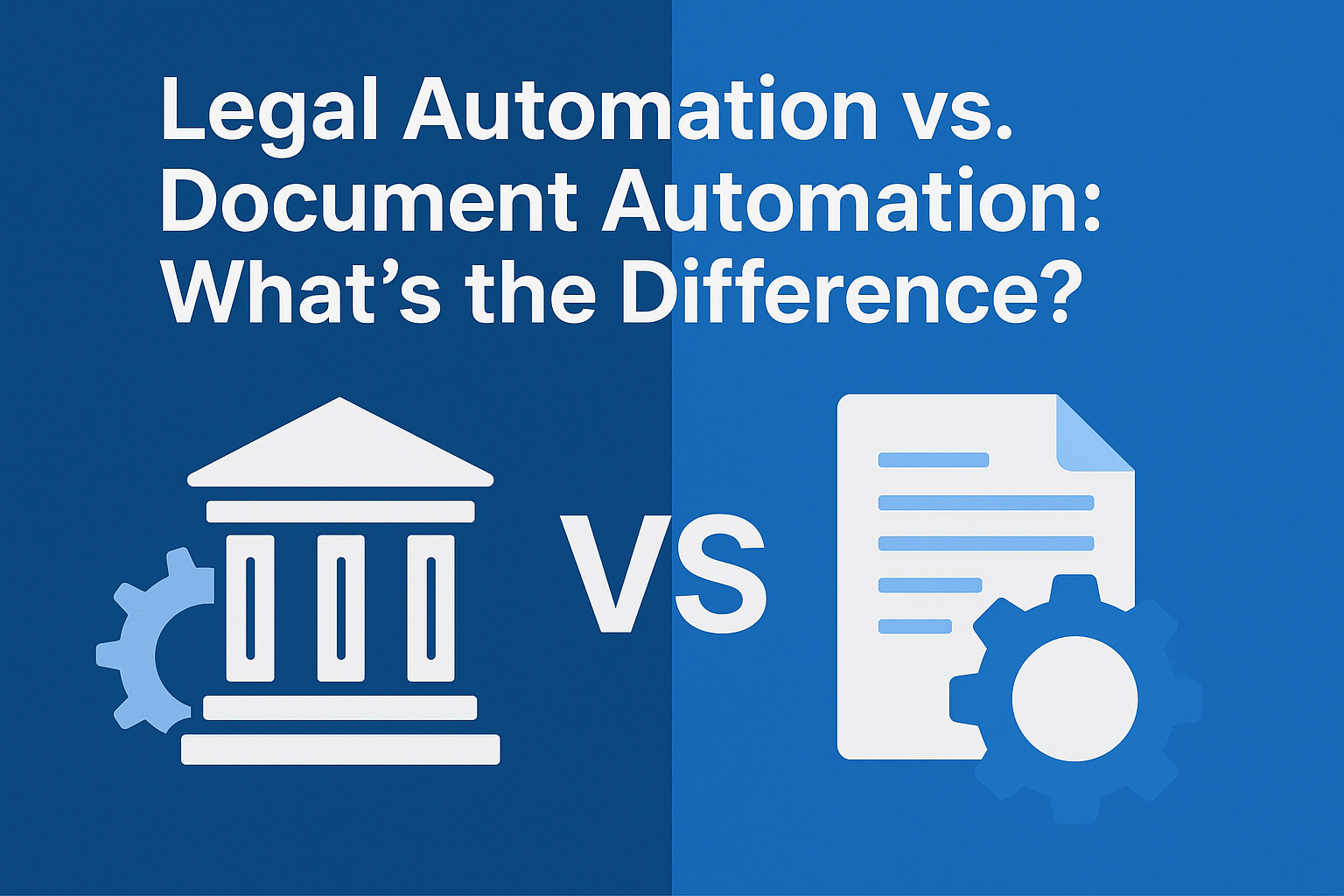
Legal Automation vs. Document Automation: What's the Difference?
Legal automation vs. document automation is one of the most common confusions when firms explore technology. In 2025, UK and EU lawyers evaluating tools are asking the same question: is this just a faster way to generate documents, or does it actually transform legal work?
The difference matters. Document automation streamlines paperwork. Legal automation embeds legal reasoning into workflows, applying playbooks, checking compliance, and protecting client interests.
What is Document Automation?
Document automation is the process of generating standardised documents from templates. A user inputs variables (names, dates, clauses) into a questionnaire, and the system populates the document.
It works well for:
- Routine NDAs, engagement letters, or HR contracts
- High-volume but low-variance documents
- Scenarios where speed is more important than nuance
The benefits are clear: fewer typos, faster turnaround, and consistent formatting. But document automation only handles form filling. It doesn't assess risk, interpret law, or adapt to client-specific strategies.
What is Legal Automation?
Legal automation goes further. It doesn't just generate documents; it applies legal reasoning, precedent, and context to tasks. Instead of filling templates, it automates workflows lawyers previously did manually.
Legal automation can:
- Review contracts against playbooks
- Identify risks, omissions, or deviations
- Draft clauses in the firm's tone and definitions
- Summarise correspondence into timelines for matters
- Integrate research from legal authority databases
Legal automation is about embedding legal judgment into repeatable processes. It augments lawyers rather than replacing them, reducing hours spent on low-value work whilst preserving professional oversight.
Legal Automation vs. Document Automation: Key Differences
| Aspect | Document Automation | Legal Automation |
|---|---|---|
| Scope | Creates documents from templates | Automates legal workflows end-to-end |
| Intelligence | Fills fields, applies formatting | Applies playbooks, reviews clauses, cites authorities |
| Best for | High-volume, low-variance docs | Risk-sensitive, precedent-driven tasks |
| Output | Completed document | Reviewed draft, risk analysis, or workflow outcome |
| Value | Speed and consistency | Efficiency plus professional-grade insight |
3 reasons the distinction matters
Client expectations in the UK and EU: Corporate clients want speed, but also assurance that outputs are explainable, GDPR-compliant, and grounded in precedent. Document automation alone can't deliver that.
Regulatory pressure: The SRA reminds UK lawyers that confidentiality, privilege, and accuracy apply equally to AI-enabled workflows. EU-facing firms must also align with GDPR and the EU AI Act.
Competitive edge: The Law Society Gazette and the Financial Times have both reported that mid-market firms in London and regional hubs are investing in legal automation to remain competitive, whilst document automation is now considered table stakes.
How Qanooni fits
Qanooni is a legal automation platform, not just a document automation tool. It was designed to reflect how lawyers already work:
- Draft Builder creates first drafts in the firm's tone and definitions
- Review Assistant checks contracts against passive playbooks, clause by clause
- QCounsel delivers research grounded in authority databases with citations
- Matter History summarises correspondence into structured timelines
Because it lives inside Word and Outlook, Qanooni integrates seamlessly into workflows lawyers already trust. It saves six to eight hours a week, speeds reviews by up to 2.5x, and ensures outputs preserve the represented party's interests.
👉 Explore how this works with Qanooni's Microsoft Word plugin.
FAQs
Is document automation the same as legal automation?
No. Document automation fills templates. Legal automation applies playbooks and workflows.
Which delivers more value?
Document automation improves speed and consistency for routine work. Legal automation delivers efficiency and insight for risk-sensitive tasks.
Can firms use both?
Yes. Many firms start with document automation for simple documents and then adopt legal automation for higher-value matters.
Why is Qanooni legal automation, not document automation?
Because it goes beyond templates: Qanooni reviews contracts, applies playbooks, drafts in firm style, and grounds outputs in legal authority databases.
Is legal automation compliant with UK and EU regulations?
Yes. Qanooni aligns with UK SRA professional duties and supports GDPR and EU AI Act obligations for cross-border work.
Closing thought
Automation in law is not one-size-fits-all. Document automation reduces admin friction. Legal automation changes the way lawyers deliver value.
Qanooni was built to embody legal automation: lawyer-first, authority-grounded, and integrated into the tools firms already use.
👉 Want to see how legal automation works in practice? Book a demo today.